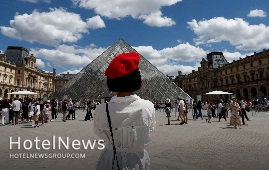
A recent study by the French National Cinema Center indicates that more than half of international tourists who visited France last year were persuaded to travel to the country after watching a French film or TV series. The study also examined the length of stay and budget of tourists. The results show that on average, Chinese and American tourists stay longer in France compared to European tourists, with their first trip to the country being their initial exposure. Among those who watched a product filmed in France, 80% said they were influenced to visit the country. This study demonstrates that television advertising, whether in the form of films or series, can be a powerful tool for attracting tourists to France.
Create: Feb 23, 2024 Edit: Feb 23, 2024 International News
Radisson Hotel Group completed 2023 with extraordinary growth, adding more than 30,000 rooms to its international portfolio of 10 leading brands with new openings and agreements. With these results, Radisson Hotel Group has grown its operations by 50% since 2018, when the transformation plan began. In 2023, Radisson Hotel Group broke a new record with the agreements and openings of more than 30,000 rooms added to its portfolio. Radisson Blu, the group's leading brand, continued to be Europe's largest upper segment brand for the 12th time in a row. Head of Global Development, Radisson Hotel Group, said: We are grateful to our friends. We expect 2024 to be a continuation of 2023 as inflation slows down and investors' interest in the sector continues.
Create: Jan 25, 2024 Edit: Jan 25, 2024 International News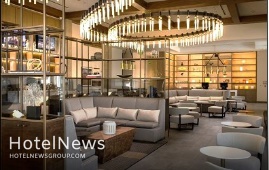
Today announced that it has completed an initial closing of the previously announced portfolio acquisition through its existing joint venture with GIC from affiliates of NewcrestImage. The initial closing included 26 of the 27 hotels totaling 3,533 guestrooms, two parking structures, and various financial incentives. The remaining hotel to be acquired is the currently under construction 176-guestroom Canopy by Hilton New Orleans which is nearing completion, and the joint venture expects to close on the acquisition of the hotel during the first quarter 2022 (collectively with the initial closing referred to as the “Transaction”). The total consideration for the Transaction is comprised of $776.5 million, or $209,000 per key, for the 27-hotel portfolio, $24.8 million for the two parking structures, and $20.7 million for the various financial incentives. The Transaction is expected to be immediately accretive to adjusted FFO per share, generate a stabilized net operating income yield of 8.0% to 8.5% including future capital investment and excluding any ancillary joint venture fees earned by Summit, and be leverage neutral to the Company’s balance sheet while preserving existing liquidity of nearly $450 million.
Create: Jan 15, 2022 Edit: Jan 15, 2022 International News
Over 94,000 domestic tourists have stayed in the province during the mentioned time, Jalil Jabari said on Thursday. In nine months, over 16,000 foreign travelers stayed in the province’s accommodation centers and it is estimated that 5,500 foreign tourists will stay in these units in the fourth quarter of the year, the official added. The accommodation centers have generated over 40 job opportunities during the mentioned time as well, he noted. Back in December, Jamshid Hamzehzadeh the head of the Iranian Hoteliers Association announced that following the planned measures, the occupancy rate of the country’s hotels, which had fallen below five percent because of the outbreak of the coronavirus, has reached 45 percent over the past three months. Multiple problems, notably the pandemic, caused a severe impact on the tourism industry, the official explained. Even before the coronavirus outbreak and in 2019, travel was reduced due to heavy rains and flooding across the country, and the hotel industry had to recoup nearly 100 percent of the costs paid for canceled hotel reservations, he added. The Iranian hoteliers have lost 220 trillion rials (about $740 million) over the past two years, he noted. However, some problems have been resolved and the hotels’ condition has improved, he mentioned. Back in October, the official announced that Iranian hotels are ready to receive foreign tourists as the issuance of tourist visas and the flow of foreign tourists from land and air borders would be resumed. Ninety percent of the hotel staff have been vaccinated against the coronavirus, so the hotels are ready to welcome foreign tourists, observing strict health protocols, he said. The main destinations of foreign tourists in Iran are specifically cities such as Mashhad, Qom, Tabriz, Shiraz, Yazd, and Isfahan, and to return to the figure of over eight million incoming tourists before the outbreak of the coronavirus, serious planning is required, the official added. Iraqi tourists will flood the country once the borders open, but attracting tourists from Europe will require some time, he noted. However, he noted that two-thirds of the hotel staff have lost their jobs, he added. Back in September, Hamzehzadeh announced that all employees of accommodation centers across Iran are scheduled to be vaccinated against the coronavirus. “To vaccinate staffs of all accommodation centers, including eco-lodges, apartment hotels, and guest houses, as well as hotels, more coordination with the Ministry of Health is needed,” he added.
Create: Jan 15, 2022 Edit: Jan 15, 2022 Regional News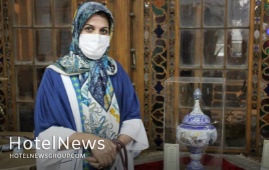
Arabian, who is a master of metalwork and Minakari (enamel), participated in the event with one of her exquisite works, a lavishly-decorated metal bowl designed for serving gaz (nougats with pistachios and almonds), CHTN quoted Vida Tavahodi as saying on Friday. Minakari is an ancient art of painting natural motifs such as flowers and birds on the surface of metals, mostly copper. Due to the outbreak of the coronavirus, the event was held virtually in India, but the artist will soon be awarded the prize at a ceremony, the official added. The award for the Male Craftsperson of the Year went to Dalavayi Kullayappa from India, while Zohra Said from Morocco and Ismael Arturo Rodriguez Moreno from Mexico named Female Craft Designer of the Year and Male Craft Designer of the Year respectively. ICA is organized by Craft Village, a social organization, based out of New Delhi, India, working towards training and promotion of handicrafts. ICA sets a new benchmark in the world with the highest level of skill and design excellence. The awards provide an open platform for makers working in a wide variety of materials and media to have their work assessed by a professional jury and international craft experts. These awards promote, inspire and encourage talent of the highest standards, making International Craft Awards an annual global feature. With 14 entries, Iran ranks first globally for the number of cities and villages registered by the World Crafts Council, as China with seven entries, Chile with four, and India with three ones come next. In January 2020, the cities of Shiraz, Malayer, and Zanjan and the village of Qassemabad were designated by the WCC- Asia Pacific Region, putting Iran’s number of world crafts cities and villages from ten to 14.
Create: Jan 15, 2022 Edit: Jan 15, 2022 Regional News
Red tourism, which refers to visiting historical sites with a modern revolutionary legacy, became an increasingly popular choice for travelers in 2021, data from a recent report showed. The number of searches for "red tourism" on Mafengwo, a Chinese travel service and social-networking platform, increased by 176 percent this year from a year earlier, according to the report jointly published by Mafengwo and China Tourism Academy. According to Xinhua, red tourist destinations in north China's Beijing-Tianjin-Hebei region have grown in popularity at the quickest rate nationwide, with the number of searches surging 240 percent year-on-year, the report said. Nearly 42 percent of respondents to a survey in the report said they visited red tourist sites more than three times this year, and over 40 percent of them went to such places "frequently" and "voluntarily" for sightseeing and knowledge. Red-themed homestay and live show are the favorite activities of tourists in 2021, with each of them accounting for nearly 20 percent of all activities in red tourism, according to the report.
Create: Jan 2, 2022 Edit: Jan 2, 2022 International News
Menus are an important aspect of the overall presentation of a hotel restaurant. Indeed, a whole book on proper menu design could be written, with inventory arrangements, fonts, graphics, spacing, types of paper, menu backings and all other stylistic concerns outlined as contributing factors for a guest’s overall appreciation of the dining outlet. The pandemic has thrown a wrench in this marketing and sentiment-boosting tool as many customers now expect menus to be accessible on their phones via a QR code. The benefit for the restaurant is certainly there in the form of saving on printing costs, but it’s nonetheless a tradeoff. The concern that we have over the proliferation of QR menus is that they don’t build guest satisfaction as much as their physical antecedents, and this reduced sentiment can halo back onto room revenues in a negative way. Here’s why: paper is palpable. You feel the slight roughness of a thick paper stock, subtly smell the ink, are delighted by the way the room’s lighting creates soft shadows on the page and are soothed by (what we ideally hope that you would use for your establishment) the touch of the leather menu backing on the palm of your hand. Viewing a menu on your phone gives you none of that. Yes, you get graphics, color and the ability to keep the webpage updated in real-time as inventory changes, but everything beyond the straight visuals are lost in the endless scroll of a two-dimensional screen. And building on this notion of scrolling, one critical difference is that a physical menu presents all items together for readers to consider, whereas a responsive webpage (over simply displaying a PDF version of the menu) will usually configure all items into a single column so as to keep everything legible and to avoid lots of pinching. This second drawback is one of perception, where a narrowly focused column on one’s phone can increase the observed length of the menu, resulting in patrons ‘dropping off’ before perusing the entirety of it. We see a similar trend in website readership where it falls precipitously after around the first quarter of an article or page. In sum, on digital-first menus, you have to put your most expensive items (or highest margin) items at the top or they will likely be missed. At this point, with the end of the pandemic still very much a question mark, optionality and fitting your theme is what works best. Paper menus should be readily presented at high-end restaurants so that the theme is congruent and customer satisfaction isn’t deteriorated, while at more casual settings a QR code access may be just fine. While there are both paper and labor costs associated with QR menus, you must still consider the above downsides.
Create: Jan 1, 2022 Edit: Jan 1, 2022 F and B
After years marred by a global public health crisis, many of us are lapping up in-person social gatherings with friends, family and colleagues. Morning catch-ups over coffee, afterwork happy hour at the favorite waterhole or weekend drinks in town had mostly been replaced with coffees-to-go, virtual apéros, or alfresco drinking in winter like in summer. Consumers have become today their own baristas and bartenders, imbibing alone at home or at a distance outside. So how, and with what, will we quench our thirst? Here is EHL’s selection of the top drink trends in 2022. In this pandemic-era, there is no doubt that the megatrends for the new year will center around healthier and ‘cleaner’, more sustainable, premium and socially responsible products in line with the mantras – good for me, good for the planet – and quality over quantity. With movements like mindful drinking and “sober curious” gaining popularity, research indicates that alcohol consumption has declined with younger generations drinking less as they show greater interest in holistic wellness and health. And the beverage industry has been paying attention to these shifts in concern, consciousness and habits. Functional and healthy beverages are on the rise, and no and low alcohol ready-to-drink offerings from North America to Europe and Asia-Pacific have boomed as they prove to be both a more convenient and ‘safer’ option in a world still plagued by COVID-19 measures and barrier gestures. But globally, we’re seeing an array of interesting new product developments, packaging innovations and surprising mergers and acquisitions with the lines between the health movement, the low- and no- alcoholic category and the wider drinks industry becoming increasingly blurred. Beyond these general tendencies, we take a look at six particular drink trends for the year ahead. 1. CBD-infused relaxation drinks For those of us who frequent trendy bars, a controversial yet very 2022 new trend has found its way onto cocktail menus in only the most avant-garde of venues. 2. The bubble tea craze goes global Despite being invented in the 1980s, bubble tea is set to see its popularity soar to new heights. From the US to Germany, China to Brazil, the bubble tea industry is going global with its market expected to grow by almost $2 billion to reach $4.3 billion by 2027. The refreshing Taiwanese tea-based drink with its tapioca or fruit jelly ‘bubbles’ is appealing to health-conscious individuals enjoying the healthier variants low in sugar, with organic soya milk, green tea or fruity mixes as well as a younger generation seduced by its 200 or so different flavor combinations and even more customizable options making for a truly unique, tasty and fun drink. 3. Fermented drinks as a health-booster Increased awareness on the importance of fueling our body with quality and nutritious food and drink is driving a rapid growth in fermented beverages, occupying a significant portion within the functional and healthy drinks category. It’s estimated that probiotic beverages are expected to achieve over $77 billion in sales by 2025, almost double the revenue generated worldwide in 2018. While kombucha has been topping the leader board for some years, it’s now got some serious competition. Water kefir, with its more diverse probiotic strains shown to help boost the immune system and aid digestion, is gaining momentum and creeping into the mainstream. As is the fermented Mexican soda Tepache – another healthy, flavorsome, sustainable alternative to kombucha. While not new in itself, it has promising prospects in this ‘health-conscious’ era, but hey, it’s just a gut feeling! 4. Wines and champagnes with star power Celebrity beverage endorsements are nothing new. Think George Clooney and Nespresso, Jennifer Aniston and Smart Water, or countless sporting stars endorsing energy drinks. But expect to see more and more vineyards and champagne houses partnering with big names to capitalize on their glamorous images and extend their respective brand portfolios. After John Legend, Kylie Minogue or Brad Pitt, Cameron Diaz is the latest celebrity to venture into the wine business with her “clean” wines. The range comprises of an organic and vegan French rosé and Spanish white with no added sugar, with Diaz tapping into both the wellness trend and that of the growing ‘thirst’ for ‘pink’ wine. Such partnerships are also strategic in helping introduce wines and champagnes to new consumers, in particular millennial drinkers drawn to celebrity and wellness lifestyles, and who aren’t impartial to the Instagrammable aesthetic of a fizzy or rose-tinted drink. 5. Boxed wine as a sustainable (and sanitary) choice Did you know that during the COVID-19 pandemic, bag-in-a-box wine was the supermarket alcoholic “go-to” beverage? The draw? Beyond the product within the bag, boxed wine is easier to store, it better preserves open wine, and is proving a more hygienic and sustainable option, in particular for restaurants. With each three-liter box generating about half the carbon dioxide emissions to that of a glass bottle, boxed wine is also cheaper to transport, stock and more environmentally-friendly. Something that even the more premium wine houses can’t ignore. While wine connoisseurs may jump to the conclusion that boxed wine equates to poor quality, industry experts are suggesting that that’s changing, and fast, as sales are forecast to continue surging around the world in 2022. 6. Canned cocktails with premium products While some may have enjoyed following online mixology tutorials to create their own home-made cocktails, many long for the days when original creations were served ready-made for immediate consumption. Well, spirit brands and hotel chains like the Marriott have wasted no time to offer the perfect solution and create a variety of delicious, bartender-quality, ready-to-drink cocktails in cans. Tipped to be the hottest trend in the alcoholic beverage space in 2021, the development of prepared cocktails-to-go has, according to Nielsen Premium Panel data, accelerated 171% in 2020, and shows no signs of slowing down in 2022. With high-quality ingredients, authentic flavors, options between low-calorie, sugar and alcohol or premium spirits, and convenient and sanitary packaging – grab-and-go cocktails are here to stay. 7. Spiked sodas and alcohol-free beers and spirits With interest in low and no alcohol by volume (ABV) drinks skyrocketing over the last few years, more and more people are looking for a middle ground between tee-total and drinker, between functional and indulgent, between high-quality and convenience. Consequently, low and non-alcoholic beverages are flooding the market and is the space to watch. From non-alcoholic beers and premium mocktails by spirit brands to the boom of hard seltzers now spilling over into hard coffees and kombucha – consumers are going to be spoilt for choice. Whether it’s wanting something with less sugar and alcohol, with premium products, looking for a slight ‘kick’ in traditional non-alcoholic beverages or an alternative to beer, this growing category ensures there’s something for every taste bud and type of drinker. Drink trends 2022: a toast to good health As we look to turn our backs on 2021, and raise our glasses to a new year, the question still lingers as to whether the drinking habits developed in a COVID-era will prevail in a post-pandemic world. While there is still so much uncertainty, what is clear is that the increasing consumer interest in health, wellness and mindfulness is shaping the beverage industry as a whole as it seeks to quench this thirst for holistic balance. For being able to choose alcohol-free beverages without having to sacrifice flavors, fizz or authenticity. For indulging in a drink without having to abstain completely. For a return to more simplicity with natural and ‘clean’ products. For drinking less in quantity but better in quality.
Create: Jan 1, 2022 Edit: Jan 1, 2022 Coffee Shop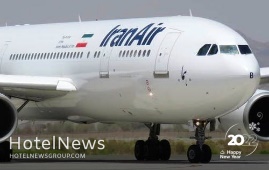
Pakistan International Airlines (PIA) has resumed direct flights to Iran’s Mashhad, after a five-year gap to develop people-to-people contacts, local media reported on Thursday. The development took place following the serious efforts of the Iranian Embassy in Islamabad to facilitate air travel between the two neighboring countries and to boost the tourism industry. Earlier this month, Chief Executive of PIA Air Marshal Arshad Malik during a meeting with Ambassador of Iran to Pakistan Mohammad Ali Hosseini had announced that the PIA is going to start direct flights from Lahore to Mashhad, Asian News International reported. Ambassador Hosseini in a tweet had also revealed that Iran and Pakistan had agreed on increasing efforts to promote air cooperation between Iran and Pakistan. In this regard, PIA is going to begin direct flights from Karachi to Mashhad on Jan 1, 2022. Iran Air operates one weekly flight from Tehran to Karachi and vice versa, and there are reports that Mahan Iran Airlines will resume flights from Tehran and Mashhad to Lahore. Mashhad is Iran’s holiest and second-largest city. Its raison d’être is the striking shrine complex of the eighth Shia Imam (AS) that is encircled by dozens of five-star hotels and many other accommodation centers.
Create: Jan 1, 2022 Edit: Jan 1, 2022 Regional News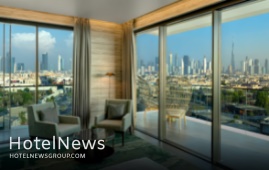
Hyatt Hotels Corporation (NYSE: H) announced today the opening of Hyatt Centric Jumeirah Dubai, marking the lifestyle brand’s debut in the Middle East. The seven-story property is set to become a social hub in the La Mer district, featuring 173 sophisticated guestrooms, including 27 spacious deluxe rooms and suites, designed to reflect the city through the playful juxtaposition of colours, textures and curated curiosities. Nestled in the heart of Dubai and bringing in a fresh take on the modern hospitality sector, Hyatt Centric Jumeirah Dubai serves as an ideal launchpad for exploration for those looking to discover the city’s local hot spots and hidden gems. Conveniently located between old and new Dubai, guests have the opportunity to experience nearby attractions including Laguna Waterpark, the La Mer beachfront shopping and dining district, Burj Khalifa, and Dubai Mall. For those seeking authentic, historical experiences, the nearby neighbourhoods of Satwa, Bur Dubai and Al Fahidi are home to traditional Arab marketplaces, known as souks, and the Etihad Museum. The hotel’s enticing dining outlets include thoughtfully designed and casual, relaxing spaces that boast an abundance of food and beverage experiences celebrating the region’s dynamic flavors. Hyatt Centric Jumeirah Dubai’s all-day restaurant is certain to become a hot spot for locals and visitors alike, serving continental favourites for breakfast, lunch and dinner. The Shisha Lounge is a contemporary space for guests to unwind and savor a selection of hookah, while The Lobby Lounge is an open yet warm space that welcomes guests all day for bites and afternoon tea. Visitors can also lounge by the pool and enjoy refreshing drinks and light snacks from The Pool Bar. Hyatt Centric Jumeirah Dubai features multiple spaces for meetings, events and social gatherings with a boardroom that fits up to eight guests, large terraces ideal for social gatherings for up to 85 guests, and the exclusive rooftop bar that can be used for small group celebrations. The terrace suite is also the perfect venue for a New Year’s party, where guests can take in the spectacular views of the Burj Khalifa’s firework show. Additional amenities and services include a temperature-controlled outdoor pool along with a spa and 24-hour gym fitted with the latest equipment. Guests can also expect, laundry and dry-cleaning services, valet parking, multilingual staff, and a full-service concierge to ensure every need is met. The hotel also offers its guests a dedicated private beach area at La Mer North beach to relax and unwind.
Create: Dec 29, 2021 Edit: Dec 29, 2021 International News
Hyatt Place Zurich Airport The Circle, the third Hyatt-branded hotel and the first Hyatt Place branded hotel in Switzerland, is officially open, expanding the Hyatt Place brand’s footprint globally in markets that matter most to guests and World of Hyatt members. The new hotel features the Hyatt Place brand’s intuitive design, casual atmosphere and practical amenities, such as free Wi-Fi everywhere and 24-hour food offerings. Because Hyatt’s efforts are grounded in listening and fueled by care, Hyatt Place hotels combine style, innovation and 24/7 conveniences to create an easy-to-navigate experience for today’s multi-tasking traveler. Hyatt Place Zurich Airport The Circle is situated in the Circle destination and directly linked to Zurich Airport, representing one of the most central locations in Switzerland. Guests can conveniently enjoy the business and lifestyle offerings of the Circle, which includes shops, restaurants, a park, airport facilities and The Circle Convention Center. After a productive day, guests can unwind in the park or take advantage of the great outdoors, as the Swiss Alps and Lake Zurich are nearby. Hyatt Place Zurich Airport The Circle offers: - 300 spacious guestrooms with separate spaces to sleep, work and play, as well as a Cozy Corner sofa-sleeper - The Market serving a selection of perfectly packaged grab-and-go items from snacks to salads as well as beverages available 24/7 - ZOOM Restaurant with all-day dining and take-out options, delivering responsibly sourced, regionally inspired fare as well as international classics, including small bites such as wraps and waffles and heartier options including salads, burgers, fries and Zurich specialties - Necessities program for forgotten items that guests can buy, borrow or enjoy for free - Free Wi-Fi throughout the hotel and guestrooms - Convenient Workspaces and Event Spaces including a communal table in the lobby and over 30,000 square feet (2,800 square meters) of function space at The Circle Convention Center - Fitness Center open 24/7, featuring cardio equipment with LCD touchscreens, along with the nearby park offering outdoor jogging and walking
Create: Dec 29, 2021 Edit: Dec 29, 2021 International News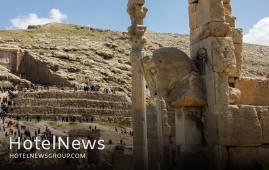
Authorities of Persepolis have launched an unmanned aerial vehicle (UAV) documentation project to help study and analyze the neighboring lands and properties, which encircle the UNESCO World Heritage site in southern Iran. “A documentation project has been commenced on the closest boundaries of Persepolis to gather needed information to monitor possible changes and interventions in this area,” said Hamid Fadaei, the director of the World Heritage site. The first purpose of this documentary is to prepare a cadastral map of agricultural lands in the first-grade boundaries of Persepolis, and the second purpose is to record the current status of historical monuments, including historical sites and hills that are dotted in that area, Fadaei explained. “In that regard, we operate close-range photogrammetry and UAV in the documentation of architecture monuments…..And the project is expected to become to an end by the yearend (March 20, 2022),” the official noted. Persepolis, also known as Takht-e Jamshid, whose magnificent ruins rest at the foot of Kuh-e Rahmat (Mountain of Mercy) is situated 60 kilometers northeast of the city of Shiraz in Fars province. It was the seat of the government of the Achaemenid Empire, though it was designed primarily to be a showplace and spectacular center for the receptions and festivals of the kings and their empire. Persepolis ranks among the archaeological sites which have no equivalent, considering its unique architecture, urban planning, construction technology, and art. This 13-ha ensemble of majestic approaches, monumental stairways, throne rooms (Apadana), reception rooms, and dependencies is classified among the world’s greatest archaeological sites. The city’s immense terrace was begun about 518 BC by Darius the Great, the Achaemenid Empire’s king. On this terrace, successive kings erected a series of architecturally stunning palatial buildings, among them the massive Apadana palace and the Throne Hall (“Hundred-Column Hall”). According to Britannica, the stone was cut with the utmost precision into blocks of great size, which were laid without mortar; many of them are still in place. Especially striking are the huge columns, 13 of which still stand in the audience hall of Darius I (the Great; reigned 522–486 BC), known as the Apadana, the name given to a similar hall built by Darius at Susa. There are two more columns still standing in the entrance hall of the Gate of Xerxes, and a third has been assembled there from its broken pieces. Narratives say that Persepolis was burnt by Alexander the Great in 330 BC apparently as revenge to the Persians because it seems the Persian King Xerxes had burnt the Greek City of Athens around 150 years earlier.
Create: Dec 29, 2021 Edit: Dec 29, 2021 Regional News
